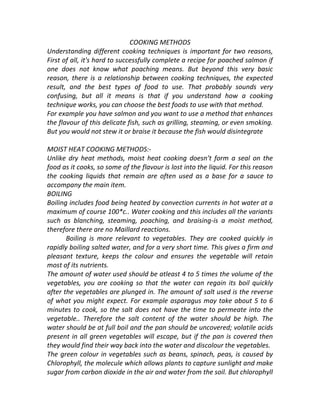Understanding different cooking techniques is important because it allows one to choose the best method for specific foods. Moist heat cooking methods like boiling, steaming, poaching and braising do not form a seal on the food, so some flavor is lost in the cooking liquid. Dry heat methods like sautéing, stir-frying, baking and grilling seal the food from the outside, locking in juices. The Maillard reaction, which produces flavorful browned compounds, only occurs with dry heat methods above a certain temperature. Choosing the right cooking method enhances flavors and preserves textures of different foods.







